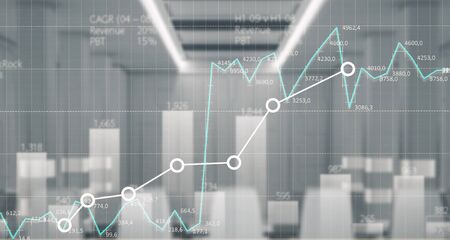1. Introduction to Technical Analysis
Technical analysis is a method used by traders and investors to evaluate financial markets based on historical price movements and trading volumes. Unlike fundamental analysis, which focuses on a companys financial health, technical analysis relies on charts, patterns, and indicators to predict future price movements.
What Is Technical Analysis?
Technical analysis involves studying past market data, primarily price and volume, to identify trends and potential opportunities. Traders believe that historical price movements tend to repeat themselves due to market psychology, making technical analysis a useful tool for decision-making.
Purpose of Technical Analysis
The primary goal of technical analysis is to help traders make informed decisions about buying or selling assets. By analyzing price charts and identifying patterns, traders can anticipate potential market movements and adjust their strategies accordingly.
How Traders Use Technical Analysis
Traders use technical analysis in various ways to improve their trading performance. Some common applications include:
| Application | Description |
|---|---|
| Identifying Trends | Traders look for upward (bullish) or downward (bearish) trends to determine the market direction. |
| Recognizing Price Patterns | Certain patterns, such as head and shoulders or double tops, signal potential reversals or continuations. |
| Using Technical Indicators | Indicators like moving averages, RSI, and MACD help traders confirm signals before making trades. |
| Setting Entry and Exit Points | Technical analysis helps traders decide when to enter or exit a trade based on support and resistance levels. |
Why Technical Analysis Matters
Many traders prefer technical analysis because it provides a structured approach to analyzing markets. By focusing on price action rather than company fundamentals, traders can react quickly to market changes and develop strategies suited for short-term trading.
2. Understanding Price Action and Trends
Technical analysis is all about understanding price movements and identifying trends in the market. By analyzing historical price data, traders can make informed decisions about potential future movements. This section will cover how to recognize different market trends and the significance of support and resistance levels.
Explaining Price Movements
Price action refers to the movement of a security’s price over time. Traders use charts to analyze patterns and trends, aiming to predict where prices might go next. Market movements are influenced by supply and demand, news events, and trader psychology.
Identifying Market Trends
There are three primary types of trends:
- Uptrend: A series of higher highs and higher lows, indicating that buyers are in control.
- Downtrend: A series of lower highs and lower lows, showing that sellers are dominating.
- Sideways (Range-bound) Market: Price moves within a horizontal range without clear upward or downward direction.
| Trend Type | Description | Key Characteristics |
|---|---|---|
| Uptrend | Prices consistently move higher | Higher highs, higher lows |
| Downtrend | Prices consistently move lower | Lower highs, lower lows |
| Sideways Market | No clear upward or downward movement | Price fluctuates within a range |
The Significance of Support and Resistance Levels
Support and resistance levels play a crucial role in technical analysis:
Support Levels
A support level is a price point where demand is strong enough to prevent further decline. When prices approach this level, buyers step in, increasing demand and pushing prices back up.
Resistance Levels
A resistance level is where selling pressure prevents the price from rising further. When prices reach this level, sellers take control, causing prices to drop.
Why Support and Resistance Matter?
These levels help traders determine entry and exit points for their trades. If a stock breaks above resistance, it may indicate a bullish trend. Conversely, breaking below support could signal further downside movement.
Final Thoughts on Trends and Price Action
Understanding price movements, trends, and key support/resistance levels is essential for technical traders. By identifying these patterns early, traders can improve their decision-making process and increase their chances of success in the market.

3. Common Price Patterns and What They Indicate
Technical analysts rely on price patterns to predict future market movements. These patterns form based on historical price action and reflect the psychology of traders. Understanding these patterns can help traders make informed decisions. Here are some of the most common price patterns and what they indicate.
Head and Shoulders
The head and shoulders pattern is a reversal pattern that signals a potential trend change. It consists of three peaks: a higher middle peak (the head) and two lower peaks on either side (the shoulders).
Bullish Head and Shoulders (Inverse)
- Formation: The inverse head and shoulders pattern forms after a downtrend, with three troughs where the middle one is the lowest.
- Indication: Suggests a potential upward reversal.
Bearish Head and Shoulders
- Formation: Appears after an uptrend, with three peaks where the middle one is the highest.
- Indication: Signals a possible downward reversal.
Double Tops and Double Bottoms
The double top and double bottom are reversal patterns that indicate potential changes in market direction.
| Pattern | Formation | Indication |
|---|---|---|
| Double Top | A pattern with two peaks at nearly the same level after an uptrend. | Bears gaining control; signals a potential downtrend. |
| Double Bottom | A pattern with two troughs at nearly the same level after a downtrend. | Bulls gaining control; suggests an upcoming uptrend. |
Triangles
Triangle patterns indicate consolidation before a breakout. They can be classified into three types: ascending, descending, and symmetrical triangles.
Ascending Triangle
- Formation: Flat resistance level with rising lows forming an upward-sloping support line.
- Indication: Typically bullish; suggests an upward breakout.
Descending Triangle
- Formation: Flat support level with descending highs forming a downward-sloping resistance line.
- Indication: Usually bearish; implies a downward breakout.
Symmetrical Triangle
- Formation: Converging trendlines as both highs and lows move toward each other.
- Indication: Neutral; breakout direction depends on market sentiment.
The ability to recognize these price patterns can significantly enhance trading strategies. By understanding how traders interpret them, you can better anticipate market movements and make more informed decisions.
4. Technical Indicators and Their Role
Technical indicators are essential tools in technical analysis that help traders identify trends, momentum, and potential entry or exit points. These indicators analyze past price data to provide insights into market movements. Here, well explore some of the most popular technical indicators and how they assist in making trading decisions.
Moving Averages (MA)
Moving averages smooth out price data to create a trend-following indicator. They help traders determine the overall direction of the market by averaging past prices over a specific period.
Types of Moving Averages:
- Simple Moving Average (SMA): Calculates the average price over a set period.
- Exponential Moving Average (EMA): Gives more weight to recent prices for quicker responsiveness.
Traders often use moving averages to identify support and resistance levels or confirm trends.
Relative Strength Index (RSI)
The RSI is a momentum oscillator that measures the speed and change of price movements on a scale from 0 to 100. It helps traders determine if an asset is overbought or oversold.
RSI Interpretation:
| RSI Value | Market Condition |
|---|---|
| Above 70 | Overbought (potential reversal or pullback) |
| Below 30 | Oversold (potential buying opportunity) |
Traders use RSI to confirm trends or anticipate reversals based on extreme values.
MACD (Moving Average Convergence Divergence)
The MACD is a trend-following momentum indicator that shows the relationship between two moving averages of a security’s price. It consists of the MACD line, signal line, and histogram.
How MACD Works:
- Bullish Signal: When the MACD line crosses above the signal line, it indicates potential upward momentum.
- Bearish Signal: When the MACD line crosses below the signal line, it suggests downward momentum.
The MACD helps traders identify changes in trend strength and direction.
Bollinger Bands
Bollinger Bands consist of a middle moving average line with an upper and lower band representing volatility. The bands expand during high volatility and contract during low volatility.
Bollinger Band Signals:
- Price Touches Upper Band: The asset may be overbought, signaling a possible pullback.
- Price Touches Lower Band: The asset may be oversold, indicating a potential bounce.
- Squeeze Formation: Tight bands suggest lower volatility, which can precede significant price movement.
Bollinger Bands help traders assess volatility and potential breakout opportunities.
Using Technical Indicators Together
No single technical indicator is foolproof. Many traders combine multiple indicators to improve decision-making. For example:
- A trader might use Moving Averages to identify trends while confirming momentum with MACD.
- RSI can be used alongside Bollinger Bands to spot overbought or oversold conditions more accurately.
By understanding how these indicators work, traders can enhance their ability to analyze price patterns and make informed trading decisions.
5. Risk Management and Psychology in Technical Analysis
Successful trading isn’t just about identifying price patterns and trends—it’s also about managing risk and understanding the psychological challenges that come with it. Many traders overlook these factors, leading to unnecessary losses. In this section, we’ll explore key risk management techniques and the role of psychology in trading.
Understanding Risk Management
Risk management is a crucial part of technical analysis. Even if your strategy has a high probability of success, failing to manage risk properly can wipe out your trading account. Here are some essential risk management concepts:
Position Sizing
Position sizing determines how much capital you allocate to each trade. A common rule of thumb is risking no more than 1-2% of your total account on a single trade. This ensures that even after multiple losses, you still have enough capital to continue trading.
Stop-Loss Strategies
A stop-loss order helps limit potential losses by automatically closing a position when the price reaches a predetermined level. There are different types of stop-loss strategies:
| Stop-Loss Type | Description |
|---|---|
| Fixed Stop-Loss | A set price level where the trade will be exited. |
| Trailing Stop-Loss | A moving stop-loss that follows the price as it moves in your favor. |
| Volatility-Based Stop | A stop-loss set based on market volatility (e.g., using ATR). |
The Psychology of Trading
The mental aspect of trading plays a significant role in success. Emotional decisions often lead to impulsive trades and increased risk-taking. Below are some common psychological pitfalls:
Fear and Greed
Fear: Traders may exit positions too early or hesitate to enter trades due to fear of loss.
Greed: Holding onto winning trades for too long, hoping for higher profits, often results in giving back gains.
The Importance of Discipline
A well-defined trading plan helps traders stay disciplined and avoid emotional decision-making. Sticking to predefined entry and exit points prevents impulsive behavior.
Avoiding Overtrading
Overtrading occurs when traders take excessive trades due to excitement or frustration. This often leads to unnecessary risks and poor decision-making.

